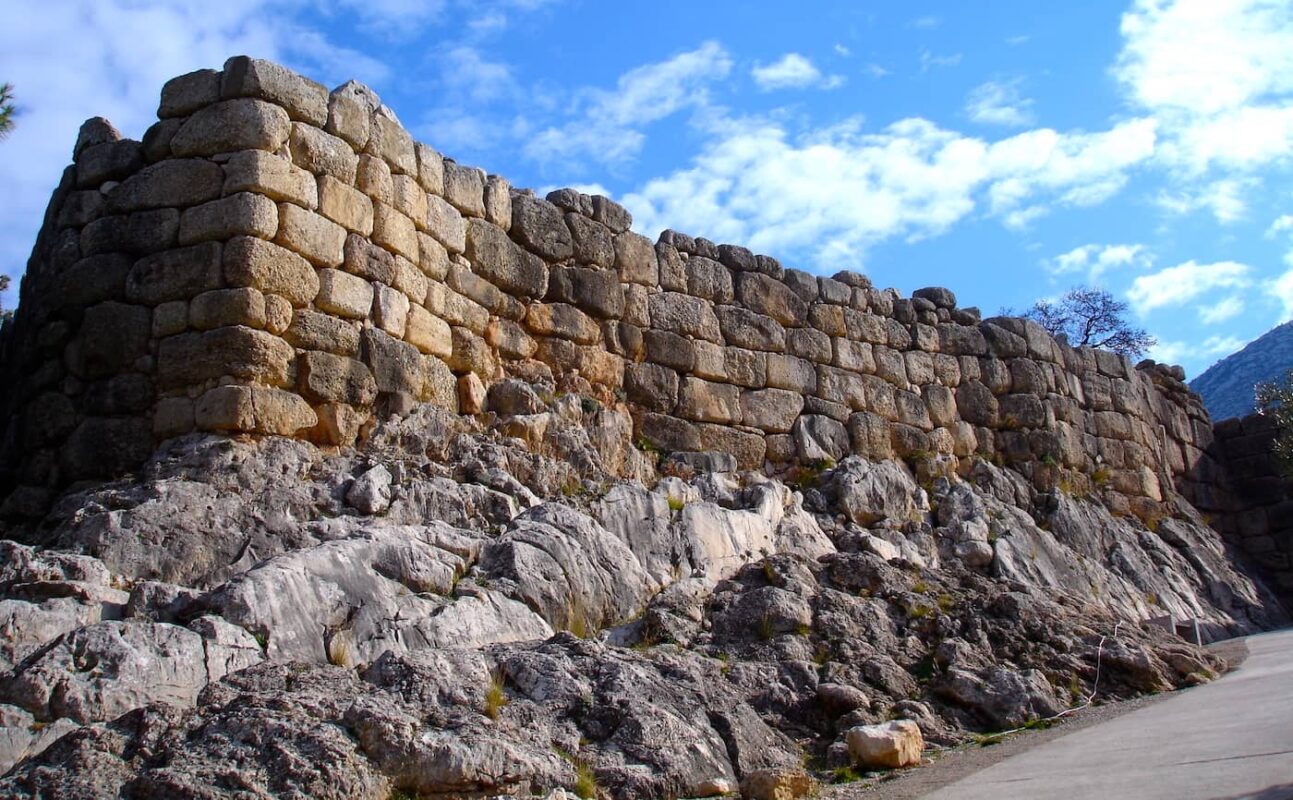Cyclopean Walls

Among the most unique and recognizable creations of the Mycenaean civilization are the so-called “Cyclopean walls”.
These are giant walls with which Mycenaeans fortify their citadels. Because the boulders used for their construction have huge dimensions the ancient Greek tradition attributed their creation to Cyclops. According to legend, Perseus, the founder of Mycenae, commissioned the Cyclops, huge mythical beings, to build the walls and that’s why they were named Cyclopean walls.
For their construction huge unworked, basically chipped boulders were used, and the gaps between them were filled with small stones to ensure the stability and balance. Only the inside and outside of the walls reassemble the “Cyclopean technique”, while inside they are filled with soil and stones. Although the fortifications impress with their volume, the research has concluded that they were intended more for show of force than for the defense of the city in time of war. Undoubtedly, the most impressive walls were those of Tiryns and Mycenae, where we also meet the impressive “Lions’ Gate”, which is decorated with two lions out of stone that remain in place until today.
How were the cyclopean walls built?
The walls now had to be built so high and strong that they would frighten the enemies but also to withstand a possible besiege. The stones had to be transported from far and some of them were quite big. However, the Mycenaeans had greatly developed their technical knowledge having copied several of the technically advanced peoples of the time, the Egyptians and the Hittites. In order to raise the huge ones to the wall they created sloping ramps made of bags filled with sand. On them they placed wooden sticks on which they dragged the stones. The higher the wall, the more they added.As soon as the building was finished, they took out the bags and everything was ready.
